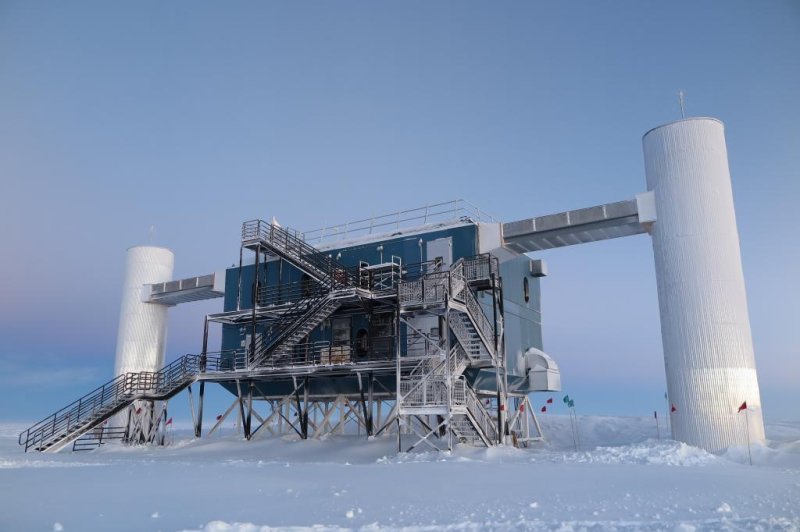IceCube, the world's largest neutrino detector, is located in Antarctica. Photo by National Science Foundation
Sept. 25 (UPI) -- Astronomers at the University of Wisconsin are hoping a new neutrino detector called IceCube can help them uncover the mystery of fast radio bursts, unique high-energy radio pulses lasting just a few milliseconds.
The first FRB was identified in 2007 from archival data collected by the Parkes radio dish in Australia in 2001. Since then, 30 more fast radio bursts have been discovered by massive radio telescopes. Despite the recordings, scientists have gathered few details about their origins.
Astronomers hypothesize FRBs are caused by mergers of relativistic objects, and the dispersion of frequencies that make up the FRBs so far identified suggest they originated in faraway galaxies -- outside the Milky Way.
Still, scientific understanding of the phenomenon remains limited.
"It's a new class of astronomical events," Justin Vandenbroucke, a physicist at Wisconsin, said in a news release. "We know very little about FRBs in general."
Researchers hope IceCube -- which Vandenbroucke has been helping fine-tune -- can change that.
High-energy neutrinos are similar to fast radio bursts in that they both arrive unexpectedly as tiny blips from mysterious faraway sources. Astrophysicists suspect the massless particles may be linked with FRBs, and IceCube, the world's most sensitive neutrino detector, could help them find out of their suspicions are correct.
Scientists believe neutrinos, like FRBs, are generated by powerful astronomical phenomena like supermassive black holes and the cores of young, star-forming galaxies.
"Astrophysical neutrinos and fast radio bursts are two of the most exciting mysteries in physics today," said Vandenbroucke. "There may be a link between them."
IceCube's wide-angle view allows the telescope to look at the entirety of the sky in search of neutrinos. Recently, Vandenbroucke and his colleagues looked at IceCube's archival data to see if any of its surveys turned up neutrinos corresponding with radio pulses produced by FRB 121102.
FRB 121102 is a galaxy some 3 billion light-years away that scientists believe is responsible for at least 17 fast radio bursts.
So far, scientists have found any corresponding neutrons. Their presence -- or lack of presence -- can help researchers narrow the range of possible FRB origins.
"We can say that the amount of energy emitted by each burst as neutrinos is less than a certain amount, which can then be compared to predictions from individual theories," Vandenbroucke said. "As the number of bursts is expected to grow dramatically in the next couple years, these constraints will become even stronger -- or we will make a detection."
Researchers detailed their analysis of four FRB events using IceCube data in a new paper, published this week in the Astrophysical Journal.















